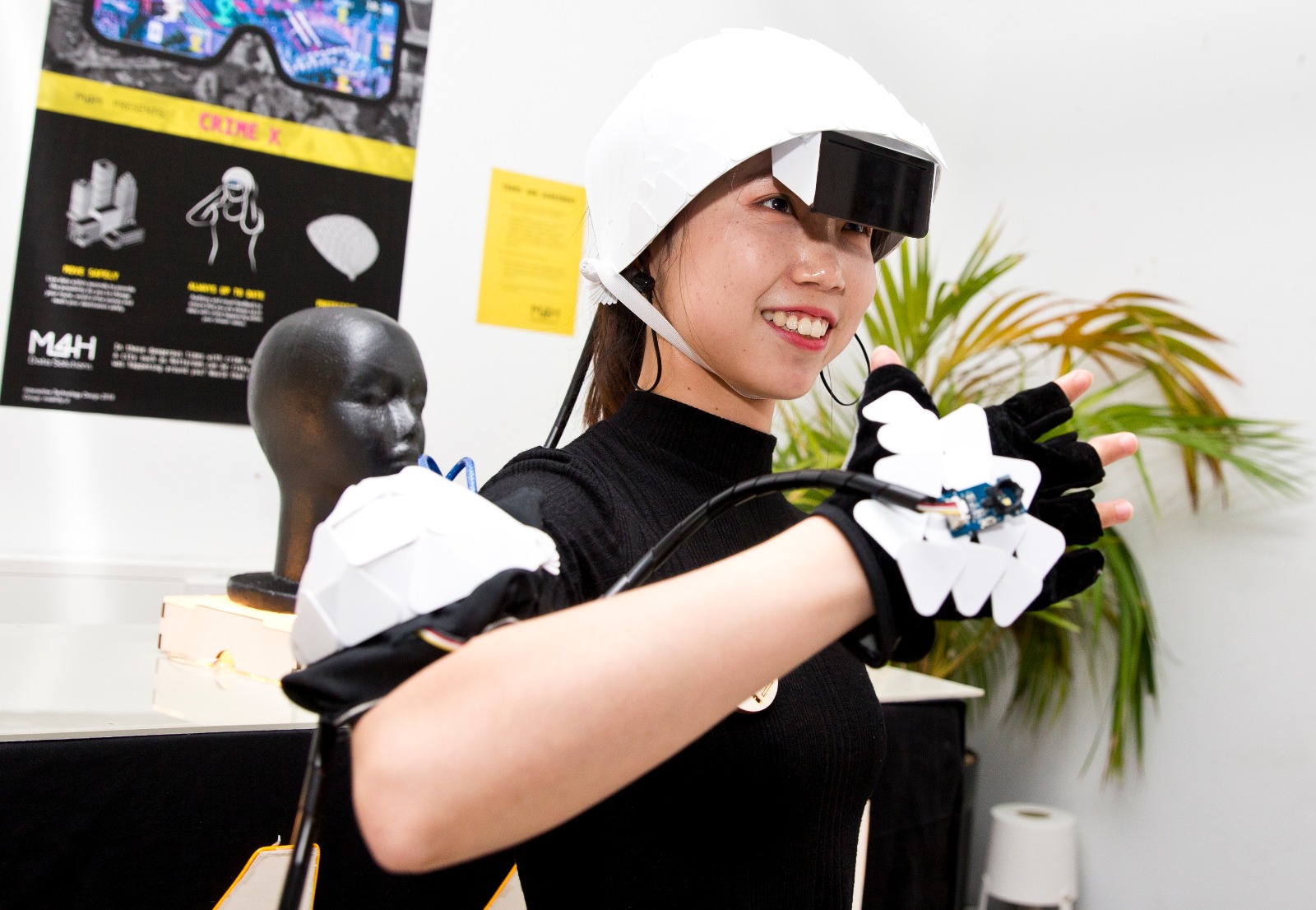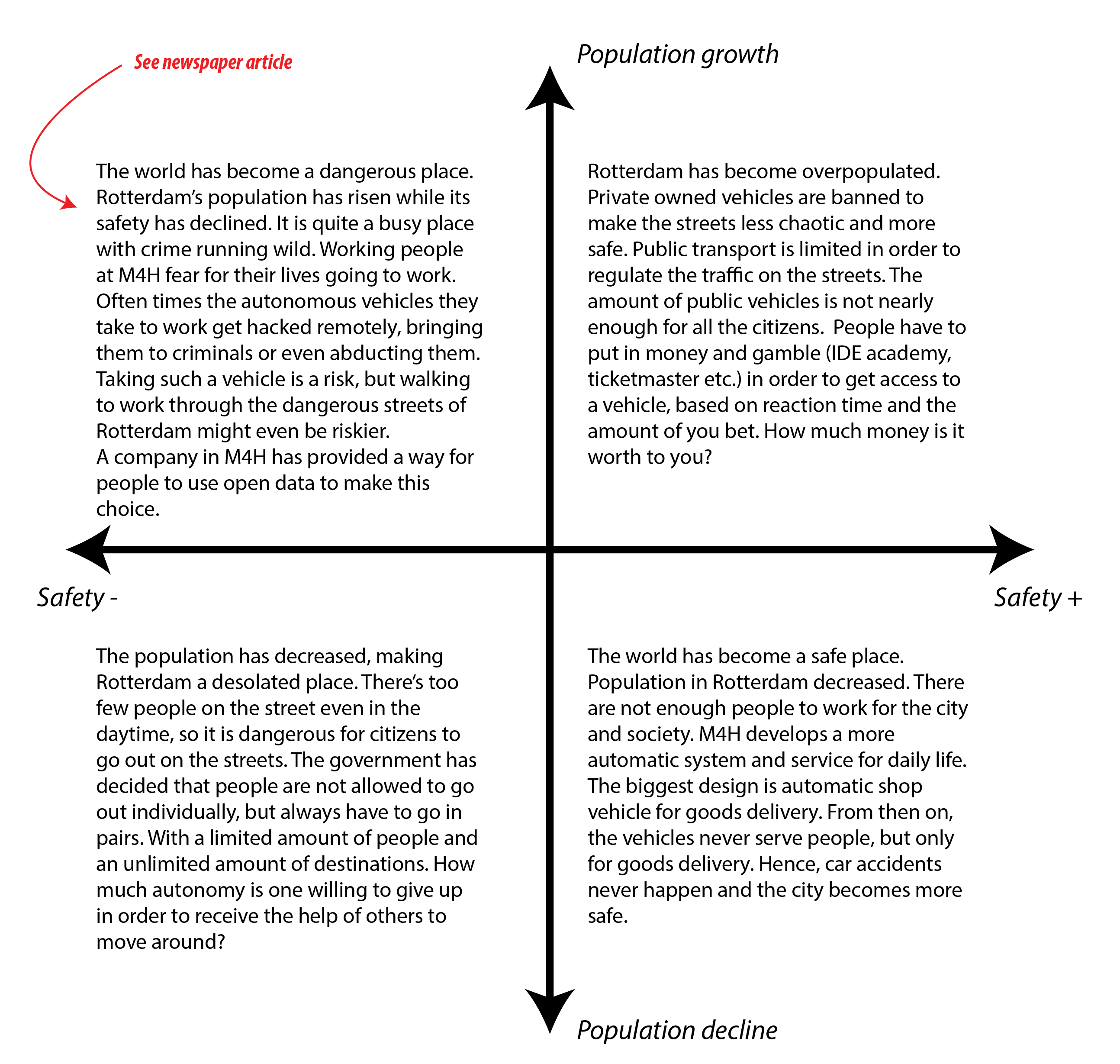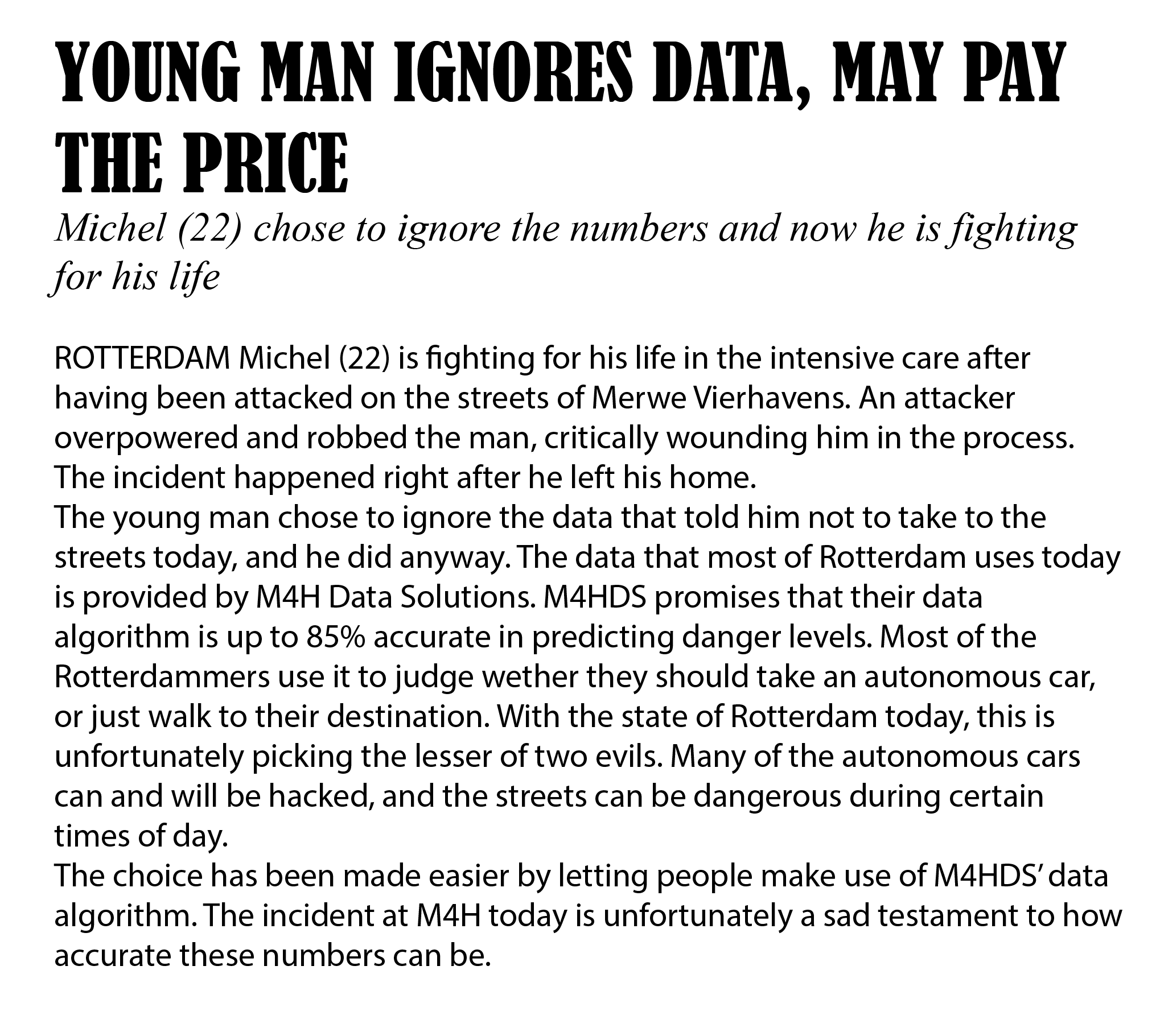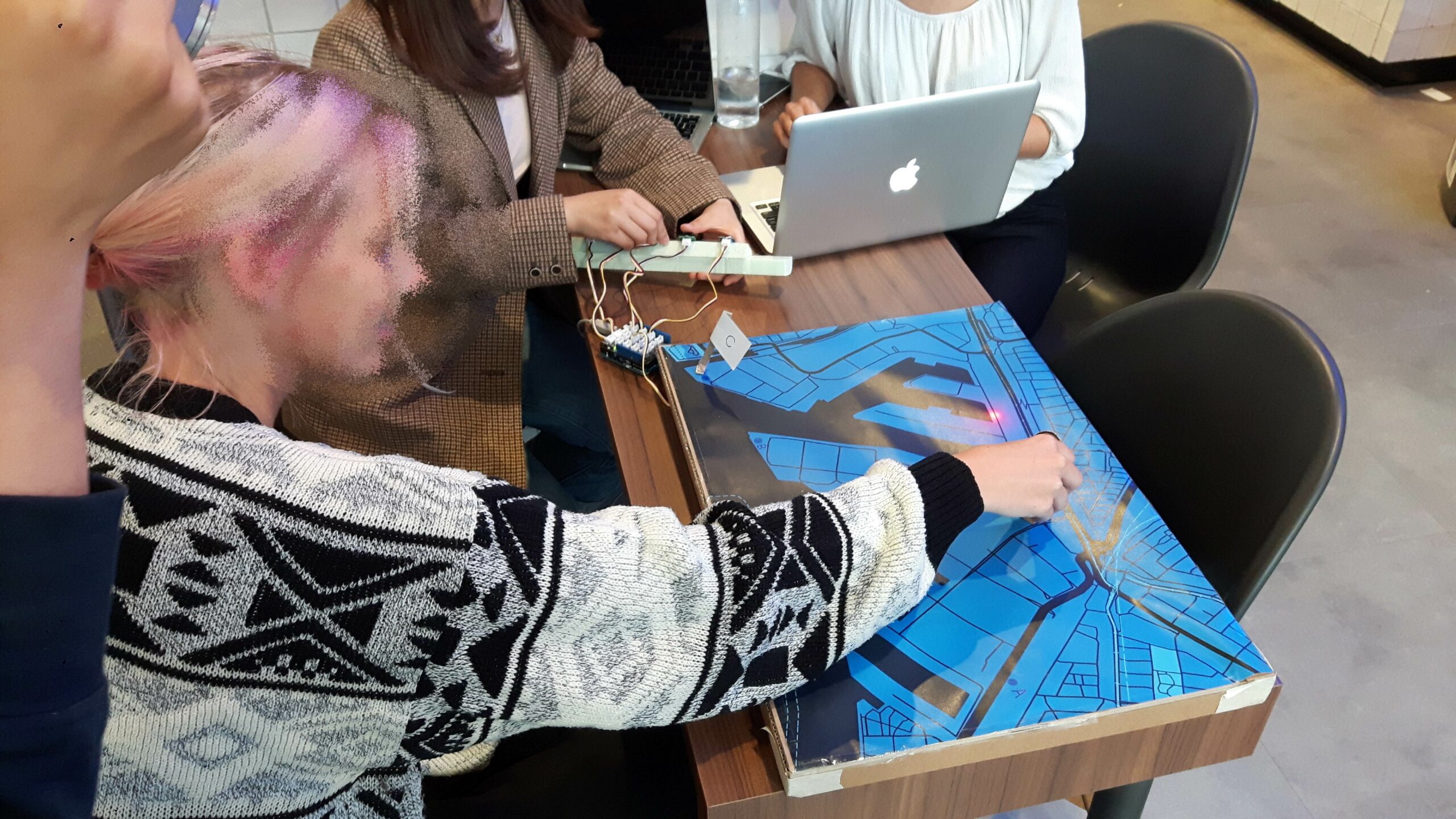CRIMEX: SPECULATIVE DESIGN PROJECT
This project was prototyping-first and future-centric. It revolved around speculative futures and imaginative designs. Our project was a design for citizens of crime-infested Rotterdam of 2058.
The design is a wearable combination that feeds the user live crime statistics, but they are only 85% accurate.
JUNE 2018
Design research, rapid prototyping, interaction design
Design

How I worked
This project was all about futuring techniques and prototyping. From the start I wanted to use the project to learn more programming and electronics skills.
In a group project I try to connect with all the members. The group was made up of four members, 2 Dutch and 2 Chinese. I learned a lot from working with international design students.
In brainstorming about futures we used different tools to aid us in speculative design, such as The Thing From The Future.
During developing and making the final prototype I set deadlines for me and the group to not get ‘lost in code’ and the details.
What I learned
- Rapid prototyping and validation
- Futuring techniques
- Prototyping-first design
- Arduino programming
- Electronics for designers

Process
Interactive Technology Design describes itself as follows:
“With Interactive Technology Design we introduce a design strategy we call “Prototype Centric Design” or “making-first” for short. In ITD we operate in the field of Human-Computer Interaction (HCI), with explicit attention to tangible interactions (also referred to as “physical” or “embodied” interactions). To clearly demarcate this focus, we encourage concepts involving interfaces engaging whole bodies of users, and we discourage apps, web-services and other forms of screen-based interfaces as the core of the concepts. Lastly, we also introduce futuring and design fictions as a way for storytelling and exposing potential problems and opportunities with the application of technology in society at large. We will bring these three dimensions of ITD together in one design brief that requires you to design an interactive experience for an exhibition. An experience that make the visitors of the exhibition reflect on the role of technology in society.”
Our work focused on a future version (dystopian) of Rotterdam. In design and the experience, users experience what it is like to be constantly be aware of the data generated by a city. We used futuring techniques such as The Thing From the Future to achieve this concept.
My role was that of Software and Media Designer, responsible for the interactive elements. I learned a lot, including a love for interactive prototyping.
The experience during the exhibition involved putting on the wearable, and descending into the basement. There the tiny led screen would protect ‘incidents’ happening in the ‘city’ for only the user to see while they walked the course.


